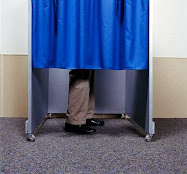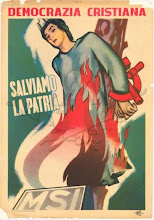
PR Consultant
During her first months in office, Alaska Gov. Sarah Palin kept a relatively light schedule on her workdays in Juneau, making ceremonial appearances at sports events and funerals, meeting with state lawmakers, and conducting interviews with Alaska magazines, radio stations and newspapers.
But this spring, Palin's official calendar chronicles an extraordinary rise to national prominence. A fresh face in Republican politics, she was discovered by the national news media at least in part because of a determined effort by a state agency to position her as an oil and gas expert who could tout Alaska's determined effort to construct a natural gas pipeline.
An outside public relations expert hired under a $31,000 contract with the state Department of Natural Resources pitched the "upstart governor" as a crusader against Big Oil, a story line that Palin has adopted in her campaign as Sen. John McCain's running mate. The contract was the only time the Palin administration hired an outside consultant to set up media interviews, a function performed in many states by government employees.
At the state Capitol, Palin agreed to be "shadowed" for days by some national reporters, and her dealings with the legislature dropped off so dramatically that some House and Senate members donned red-and-white "Where's Sarah?" buttons to show their disapproval. But her high-visibility campaign paid off, helping Palin win notice from political pundits, who began including her on lists of long-shot choices for the GOP vice presidential spot.
"We were glad she was out there promoting energy development," said Alaska state Rep. Jay Ramras (R), an occasional critic of Palin. "Who would have guessed the self-promoting element would have led to such an improbable move, to place her on the ticket, but it worked."
Palin's gubernatorial calendar, obtained by The Washington Post under the Alaska Public Records Act, adds to the understanding of Palin as a political phenomenon, a governor from an obscure state who exploded onto the national stage after just 21 months in office. While many factors played a role in Palin's rise, including her background in broadcast journalism and the appeal of her life story, she also benefited from expert counsel on how to take her message to a national audience.
Palin made energy a priority as she took office in December 2006. Much of her time was devoted to discussions of a proposed 1,700-mile pipeline that would deliver natural gas from the North Slope of Alaska to the lower 48 states. The issue had long been controversial, but Palin vowed to tackle it without making too many concessions to oil companies. Her first contact with Washington came on Jan. 17, 2007, when the vice president called her to discuss the project, the calendar shows.
In early January 2007, Palin met with Marathon Oil executives, and the next month, while attending a meeting of the National Governors Association in Washington, she met privately with Exxon Mobil executives, including the president of production at the time. The conference also provided her first audience with President Bush, who hosted the governors at the White House.
But Palin's typical day during her first months in office was far more mundane, the calendar shows. Her schedule shows long gaps in her official business on school holidays, appearances at local events and festivals, and frequent out-of-town trips with a child or two in tow.
Meetings on the pipeline became regular features on her calendar, and the Department of Natural Resources wanted to heighten national attention on it, said Kurt Gibson, a member of Palin's oil and gas team. Despite the project's "unprecedented" nature, state officials were not attracting the interest of national media, he said.
"We are a small state far removed from major media markets. We needed someone with expertise. The objective was to raise national awareness of the project," Gibson said. "It benefits not just the state of Alaska, but Americans in general. We want the public to understand this."
Gibson said Palin was an articulate advocate for the project and "the best person to deliver that message."
The agency signed a contract last year with Marcia Brier, who is based in Needham, Mass. Brier's Web site says she has been a public relations expert for 20 years, working mostly with law and medical firms. She represented Bader al-Saud, the Saudi prince, in his plea deal on a vehicular homicide charge. Another Brier client is the law firm Greenberg Traurig, which is providing legal services to the state of Alaska on the pipeline and recommended Brier to state officials.
Reached by telephone, Brier confirmed that she worked with Palin, "but once she became the vice presidential nominee, I stopped."
Brier began pitching Palin for media interviews as early as October 2007, when an e-mail was sent to The Post.
The media campaign did not take off, however, until this year, after Palin announced that TransCanada was the only firm to meet the bidding requirements for the pipeline. As events unfolded, Brier pitched stories promoting Palin, casting her as the force behind creating the pipeline plan and convincing the legislature to go along.
Media pitches sent to The Post in mid-May were titled "Big Oil Under Siege" and "Alaska's Love-Hate Relationship With Big Oil." Each offered an interview with Palin.
"The announcement of the winning bidder for a new Alaskan pipeline is a major blow to ExxonMobil, BP, and ConocoPhillips, the three oil companies operating in Alaska," Brier's pitch said. "These companies have blocked construction of a new pipeline for decades. . . . But now, the new governor of Alaska has devised a way to circumvent Big Oil's delaying tactics."
Another pitch said: "Even Alaska's upstart governor, who has been key in pushing through the pipeline project that oil companies detest, depends on these very companies for her family income. Her husband, Todd, works for BP as a field worker."
Adding to the media's interest in the 44-year-old governor was the delivery of her fifth child, Trig, on April 18. Palin flew home from a Republican Governors Association meeting in Texas to have the baby at a Wasilla hospital, and the schedules show that she returned to work three days afterward. She resurfaced to attend a meeting on the pipeline at the Capitol.
McCain shows up twice on Palin's calendar during the months he was considering her as a potential running mate. In February, he hosted a gathering with governors at a Washington hotel during the Republican Governors Association's winter meeting. The next month, Palin promoted McCain at the Alaska Republican Party's annual convention in Anchorage, reading a letter from him that expressed his regrets for not being able to attend.
On May 22, Palin recommended that the legislature approve the selection of TransCanada for pipeline construction. That same day, Brier scheduled an interview for Palin with the New York Times. She also did telephone interviews with The Post, Fox News, Fortune magazine and "60 Minutes" this spring and summer.
In June, Palin called the legislature into special session to consider the pipeline proposal as well as her plan to give state residents $1,200 oil-dividends checks. The Wall Street Journal flew in to shadow the governor, her calendar shows.
Before long, the spotlight on Palin had expanded to include personal profiles and stories about her staunch opposition to listing polar bears as endangered. People magazine, which sent a reporter to follow her, featured her in a cover story with photos of her holding Trig.
Some lawmakers complained about the governor's preoccupation with media coverage, blaming it in part for her absence at the Capitol.
There also was some resentment that Palin presented herself as the driving force behind the pipeline. "This didn't happen because of one person," said state Rep. Beth Kerttula, a Democrat and House minority leader. "We saw changes because many, many people wanted them and worked for them." The legislature ratified the TransCanada proposal in August.
Larry Persily, an associate director in Alaska's Washington office until June and a former Anchorage Daily News opinion page editor, said the governor initially might not have known how to reach out to national media, but she was well versed in doing interviews from her experience with Alaska news outlets. By the time there was some national buzz on her, he said, she was ready, and an easy sell to reporters.
"The national media loves it when we make the news, because we are so weird out there" in Alaska, Persily said. "Editors across the nation started saying, 'Let's go find out who this woman is.' "
Gibson, the oil and gas team member, said the contract with Brier ended when McCain picked Palin.
"We'd achieved our objective with getting the national attention," Gibson said. "There was no need anymore to use state money to achieve that. She has the platform. She can deliver the message. She doesn't have a problem reaching out to the media."



















